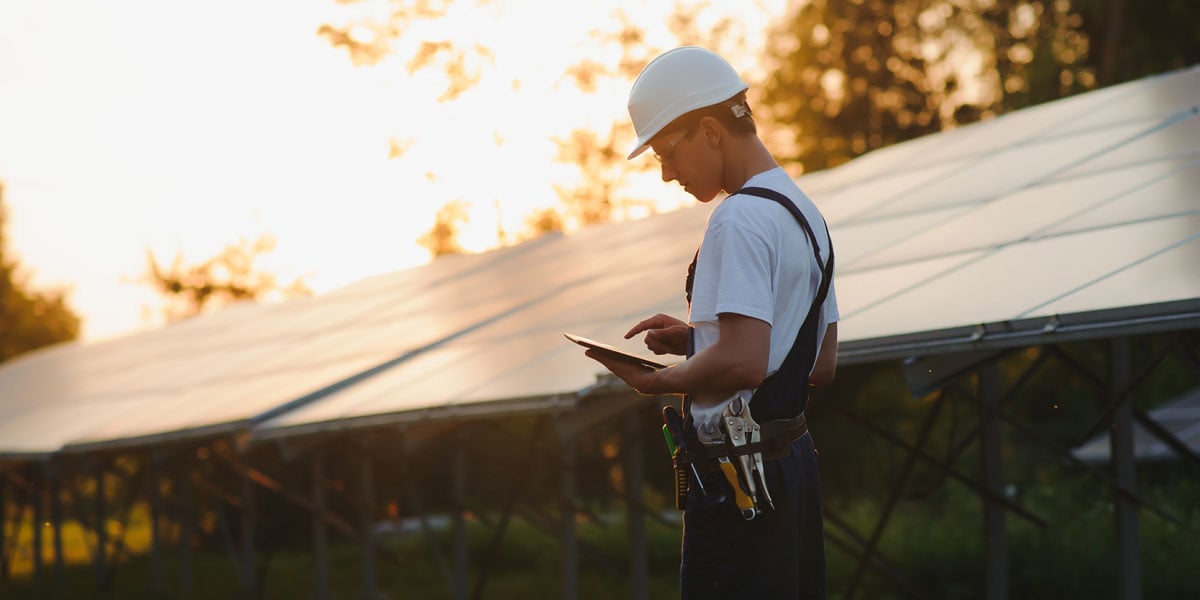-

Let's Get Real Blog Series
Exploring Climate Tech for Construction: Heat Batteries and Beyond
Let's Get Real Blog Series
How can the construction industry help reduce climate change? A recent MIT Technology Review article has ignited discussions about the potential of new climate technology to transition us to a zero-carbon economy. As someone passionate about the construction software and technology sector, this article has prompted me to contemplate the effects that climate technology will have on the construction industry. Here are my thoughts on how innovation continues to drive a greater focus on sustainability and energy efficiency and helps address climate's significant impacts on the industry.
The Impact of Extreme Weather and Climate Change on Construction
Construction must confront the impact of climate change head-on. As carbon dioxide levels in the atmosphere continue to rise with climate change, we have begun to see concerning changes in weather patterns, including a rise in natural disasters. Extreme weather events such as hurricanes, floods, and wildfires can cause significant damage to buildings and infrastructure, disrupting construction project timelines with rework and downtime. Extreme heat due to rising global temperatures can pose a health risk to workers in the field, and humidity can make it challenging to work with certain materials, such as concrete. Droughts can impact the availability of wood and other natural resources. Extreme temperatures lead to increased heating and cooling needs impacting both buildings' operational costs and environmental footprint.
Climate change poses a pressing challenge for the US construction industry:
- Extreme weather events cost the US construction industry around $22 billion in 2020 alone, up from $9 billion in 2019 (National Oceanic and Atmospheric Administration).
- The US construction industry is responsible for about 6% of the country's total greenhouse gas emissions (US Green Building Council).
- As temperatures rise, the use of air conditioning in buildings is expected to triple by 2050, resulting in significant increases in energy consumption and greenhouse gas emissions (International Energy Agency).
These statistics highlight the urgent need for the construction industry to adopt sustainable and resilient operational practices. By implementing innovative technologies and design strategies, the industry can reduce its environmental footprint while also improving the health and safety of workers.
Climate Tech: A Promising Solution to Combat Climate Change
The progress made in construction software, technologies, and inventive solutions encompasses various capabilities to address and adjust to the effects of climate and climate change. These advancements drive the integration of novel building materials, construction methods, and design approaches that prioritize safety, sustainability, and minimize the industry's environmental impact.
The MIT article I referenced earlier focused on heat batteries and bricks. This technology has the potential to revolutionize the construction industry by improving the energy efficiency of buildings and reducing greenhouse gas emissions. It’s a simple solution for a growing problem – companies are deploying systems that can capture heat generated by clean electricity and store it for later in stacks of bricks. Simply put, heat batteries and bricks store the excess heat generated by a building's heating system during periods of low demand and release it when demand is high. This process can reduce the need for additional heating during peak periods, which can lead to significant energy savings and lower heating bills. Technological innovations like heat batteries represent a huge step towards improving buildings' energy efficiency and sustainability.
Popular Climate Tech Solutions
Though the mainstream use of cutting-edge technologies such as the heat batteries and bricks described above is still years away, the industry is steadily adopting new technologies that address climate change across all sectors. Some examples:
- The adoption of green building certifications, such as LEED and BREEAM, has been growing steadily. According to the US Green Building Council, as of 2020, over 100,000 LEED-certified commercial buildings represent more than 2.6 billion square feet of space globally.
- According to the American Wood Council, the use of mass timber in North America increased by 20% in 2020.
- The implementation of energy-efficient systems, such as HVAC, lighting, and controls, is becoming more common. According to a US Department of Energy report, commercial buildings' energy use intensity (EUI) decreased by 23% from 2003 to 2018 due to the adoption of energy-efficient technologies.
Watch this webinar, "Managing and Financing Construction Assets in Uncertain Times, " to learn more about construction industry trends."
About Janan Guillaume
Janan Guillaume, VP of Product at Align Technologies, is a passionate, customer-first product professional and brings more than 17 years of experience building and leading product and engineering teams in a number of different industries and markets including healthcare, government, insurance and construction. She has led the strategy and execution for a number of product and technology initiatives from mobile applications to data-as-a-service and AI/ML. In her current role, Janan is on a mission to create effective B2B platform experiences and AI and ML products that streamline workflows and address new, key challenges faced by the construction industry.